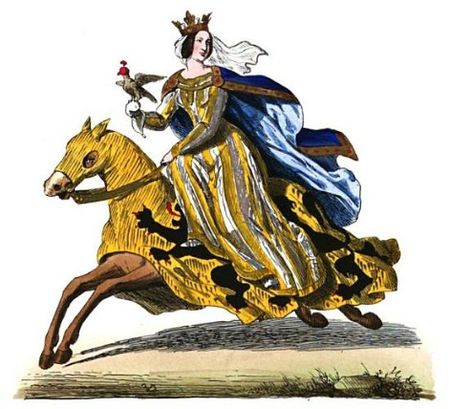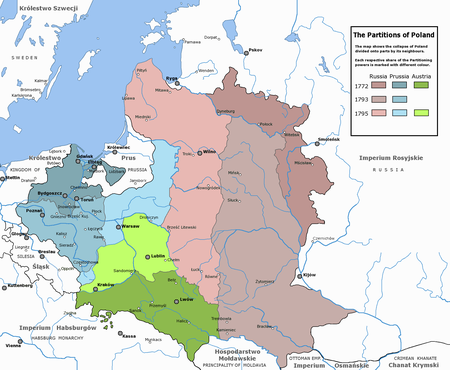Bating (leather)
|
Read other articles:

SEPTA line between Newark, Delaware and Center City Philadelphia Wilmington/Newark LineA 2-car Silverliner IV train seen at Prospect Park stationOverviewTerminiNewarkTemple UniversityStations22Websitesepta.orgServiceTypeCommuter railSystemSEPTA Regional RailOperator(s)SEPTA Regional RailRolling stockElectric Multiple Units, push-pull trainsDaily ridership3,420 (FY 2022)[1]TechnicalTrack gauge4 ft 8+1⁄2 in (1,435 mm) standard gaugeElectrificationOverhead line, 12…

Schéma en coupe frontale des différentes parties de l'utérus chez l'humain. L'utérus est un organe appartenant à l'appareil génital féminin et de la plupart des mammifères.[1] C'est l'organe permettant la gestation lors de la grossesse. Il diffère selon les espèces dans son anatomie. Étymologie L'origine dériverait du grec ou du latin « ventre » sans réelle certitude[2]. Type d'utérus Suivant les espèces, la séparation entre la partie postérieure gauche ou droite de …

Artikel ini bukan mengenai Jeanne dari Flandria. Patung Jeanne, Comtesse Flandria Jeanne sebagai Comtesse Flandria Jeanne, disebut dari Konstantinopel (1194 – 5 Desember 1244) merupakan seorang Comtesse Flandria dan Hainaut. Ia merupakan putri sulung Baudouin IX dari Flandria, yang juga adalah (sebagai Baudouin VI) comte Hainaut dan juga Kaisar Konstantinopel. Ibundanya adalah Marie dari Champagne. Sejarah Pada tahun 1202 Baudouin pergi ke Perang Salib Keempat, dan Marie bergabung dengannya du…

この項目には、一部のコンピュータや閲覧ソフトで表示できない文字が含まれています(詳細)。 数字の大字(だいじ)は、漢数字の一種。通常用いる単純な字形の漢数字(小字)の代わりに同じ音の別の漢字を用いるものである。 概要 壱万円日本銀行券(「壱」が大字) 弐千円日本銀行券(「弐」が大字) 漢数字には「一」「二」「三」と続く小字と、「壱」「弐」…

Petar KočićLahir(1877-06-29)29 Juni 1877Stričići, Vilayet Bosnia, Kekaisaran UtsmaniyahMeninggal27 Agustus 1916(1916-08-27) (umur 39)Belgrade, Kerajaan SerbiaMakamPemakaman Baru Belgrade, SerbiaPekerjaanPenulispengarang sandiwarapenyairpolitikusAlmamaterUniversitas WinaTahun aktif1899–1916PasanganMilka (née Vukmanović)Anak2 Petar Kočić (Abjad Kiril Serbia: Петар Кочић; 29 Juni 1877 – 27 Agustus 1916) adalah seorang penulis, aktivis dan politikus …

提示:此条目页的主题不是中華人民共和國最高領導人。 中华人民共和国 中华人民共和国政府与政治系列条目 执政党 中国共产党 党章、党旗党徽 主要负责人、领导核心 领导集体、民主集中制 意识形态、组织 以习近平同志为核心的党中央 两个维护、两个确立 全国代表大会 (二十大) 中央委员会 (二十届) 总书记:习近平 中央政治局 常务委员会 中央书记处 中�…

Gurus of Modern Yoga AuthorMark Singleton, Ellen GoldbergSubjectModern yogaGenreEssay collectionPublication date2014Media typePaperbackPages371ISBN978-0199938728 Gurus of Modern Yoga is an edited 2014 collection of essays on some of the gurus (leaders) of modern yoga by the yoga scholars Mark Singleton and Ellen Goldberg.[1] The book has been broadly welcomed by critics as a necessary introduction to some of these figures, though some of them have regretted the book's lack of an eva…

Road between counties Galway and Sligo in Ireland This article needs additional citations for verification. Please help improve this article by adding citations to reliable sources. Unsourced material may be challenged and removed.Find sources: N17 road Ireland – news · newspapers · books · scholar · JSTOR (September 2017) (Learn how and when to remove this message) N17 roadBóthar N17Route informationLength122.85 km (76.34 mi)Location…

Acts of terrorism carried out by adherents of communist ideologies Part of a series onTerrorism Definitions History Incidents By ideology Anarchist Communist Left-wing/Far-left Narcotics-driven Nationalist Right-wing/Far-right Religious Buddhist Christian (Mormon) Hindu Islamic (Salafi-Wahhabi) Jewish Sikh Special-interest / Single-issue Suffragette Anti-abortion Green/Ecological Misogynist Related topics Violent extremism Ethnic violence Militia movement Resistance movement Structure F…

习近平 习近平自2012年出任中共中央总书记成为最高领导人期间,因其废除国家主席任期限制、开启总书记第三任期、集权统治、公共政策与理念、知识水平和自述经历等争议,被中国大陸及其他地区的民众以其争议事件、个人特征及姓名谐音创作负面称呼,用以恶搞、讽刺或批评习近平。对习近平的相关负面称呼在互联网上已经形成了一种活跃、独特的辱包亚文化。 权力類 �…

George FawcettFawcett dalam sandiwara The Great John Ganton, 1909Lahir(1860-08-25)25 Agustus 1860Alexandria, Virginia, Amerika SerikatMeninggal6 Juni 1939(1939-06-06) (umur 78)Nantucket, Massachusetts, Amerika SerikatPekerjaanPemeranTahun aktif1915–1933Suami/istriPercy Haswell (1895–1939; kematiannya) (1 putri) George Fawcett (25 Agustus 1860 – 6 Juni 1939) adalah seorang pemeran film dan panggung Amerika Serikat pada era film bisu. Ia tampil dalam 151 film antara 1…

Anti-ballistic missile Sprint Sprint anti-ballistic missile interceptor on a test stand.TypeAnti-ballistic missilePlace of originUnited StatesService historyIn service1975–76Production historyManufacturerMartin Marietta[1]SpecificationsMass7,700 pounds (3,500 kg)Length26.9 feet (8.20 m)Diameter53 inches (1.35 m)WarheadW66 nuclear low ktEngine1st stage: Hercules X-265 650,000 pounds-force (2,900 kN);2nd Stage: Hercules X-271PropellantSolid fuelOperatio…

1992 United States Senate election in Alaska ← 1986 November 3, 1992 1998 → Nominee Frank Murkowski Tony Smith Mary Jordan Party Republican Democratic Green Popular vote 127,163 92,065 20,019 Percentage 53.05% 38.41% 8.35% Results by state house districtMurkowski: 40–50% 50–60%Smith: 40–50% 50–60% U.S. senator before election Frank Murk…

A gravitational effect also known as the differential force and the perturbing force Figure 1: Tidal interaction between the barred spiral galaxy NGC 169 and a smaller companion[1] The tidal force or tide-generating force is a gravitational effect that stretches a body along the line towards and away from the center of mass of another body due to spatial variations in strength in gravitational field from the other body. It is responsible for the tides and related phenomena, including sol…

20th-century conflict between Poland and Russia This article is about the conflict of 1918–1921. For other Russo-Polish conflicts, see Polish–Russian Wars. This article may be too long to read and navigate comfortably. When this tag was added, its readable prose size was 18,000 words. Consider splitting content into sub-articles, condensing it, or adding subheadings. Please discuss this issue on the article's talk page. (October 2023) Polish–Soviet WarPart of Central and Eastern European m…

Malaysian university This article has multiple issues. Please help improve it or discuss these issues on the talk page. (Learn how and when to remove these template messages) This article needs additional citations for verification. Please help improve this article by adding citations to reliable sources. Unsourced material may be challenged and removed.Find sources: UNITAR International University – news · newspapers · books · scholar · JSTOR (July 2018)…

United States national observatoryObservatoryNational Optical Astronomy ObservatoryAlternative namesNOAO OrganizationNational Science Foundation, AURALocationTucson, Pima County, ArizonaEstablished1984Closed2019Websitehttps://legacy.noirlab.edu/about-noao.php Related media on Commons[edit on Wikidata]Kitt Peak is the National Observatory of the United States, in contrast to the various benefactor and privately funded telescopes. The largest optical telescope at Kitt Peak is t…

In this Spanish name, the first or paternal surname is Sánchez and the second or maternal family name is Reyes. Mexican sports journalist and model Jimena SánchezSánchez in 2018BornJimena Sánchez Mejía Reyes (1984-09-28) September 28, 1984 (age 39)Mexico City, MexicoOccupationsSports journalisttelevision hostmodelactressYears active2008 - presentTelevisionLo Mejor de Fox SportsMLB en FOXWWE Saturday NightSpouse Tis Zombie (m. 2021)Modeling in…

Motor vehicle Chevrolet 400OverviewManufacturerGeneral Motors de ArgentinaProduction1962–1974 [1]AssemblySan Martín, Buenos Aires, ArgentinaBody and chassisClassExecutive carBody style4-door sedanLayoutFront engine, rear-wheel driveRelatedChevrolet Nova Chevrolet Chevy II / NovaChronologySuccessorChevrolet Chevy Malibu The Chevrolet 400 was a compact car made by General Motors de Argentina from 1962 to 1974.[1] The 400 was General Motors's reply to Ford and Chrysler after…

Place of worship for Christians Church house and Church building redirect here. For the building in Poughkeepsie, New York, see Church Building. For other uses, see Church House (disambiguation). Part of a series onChristianity JesusChrist Nativity Baptism Ministry Crucifixion Resurrection Ascension BibleFoundations Old Testament New Testament Gospel Canon Church Creed New Covenant Theology God Trinity Father Son Holy Spirit Apologetics Baptism Christology History of theology Mission Salvation U…
